Archives
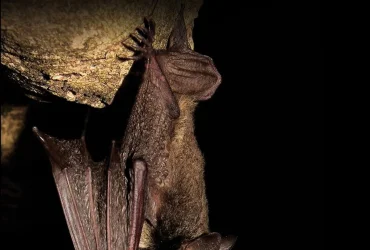 v6i1.124
v6i1.124ISSN: 1800-427X (print)
eISSN: 1800-427X (online)
DOI:10.47605/tapro.v6i1.124
Submitted date: 18 December 2013
Accepted date: 13 March 2014
Published date: 29 June 2014
Pp. 27–31.
Tall Tales of a Tropical Squirrel
Emily Mae Meijaard, Rona Anne Dennis & Erik Meijaard
*Corresponding author. E-mail: emily.meijaard@gmail.com
The Tufted Ground Squirrel, Rheithrosciurus macrotis is an endemic of the South East Asian island of Borneo. This species is remarkable in several aspects. Phylogenetic research indicates that its nearest living relatives are a group of South American squirrel species. It is unclear how the evolutionary lineage leading to Rheithrosciurus ended up on Borneo without leaving behind any known relatives on either the Asian or North American land masses. The lineage of ancestors of Rheithrosciurus occupying Eurasia is either extinct without known fossil remains or the genus supposedly colonized Borneo in an independent long-distance colonization event. More recent studies indicate that the Rheithrosciurus lineage diverged from a group of Palaearctic species of the genus Sciurus as early as 36 million years ago, and colonized Borneo overland from South East Asia.
Section Editor: Colin P. Groves
eISSN: 1800-427X (online)
DOI:10.47605/tapro.v6i1.124
Submitted date: 18 December 2013
Accepted date: 13 March 2014
Published date: 29 June 2014
Pp. 27–31.
Tall Tales of a Tropical Squirrel
Emily Mae Meijaard, Rona Anne Dennis & Erik Meijaard
*Corresponding author. E-mail: emily.meijaard@gmail.com
The Tufted Ground Squirrel, Rheithrosciurus macrotis is an endemic of the South East Asian island of Borneo. This species is remarkable in several aspects. Phylogenetic research indicates that its nearest living relatives are a group of South American squirrel species. It is unclear how the evolutionary lineage leading to Rheithrosciurus ended up on Borneo without leaving behind any known relatives on either the Asian or North American land masses. The lineage of ancestors of Rheithrosciurus occupying Eurasia is either extinct without known fossil remains or the genus supposedly colonized Borneo in an independent long-distance colonization event. More recent studies indicate that the Rheithrosciurus lineage diverged from a group of Palaearctic species of the genus Sciurus as early as 36 million years ago, and colonized Borneo overland from South East Asia.
Section Editor: Colin P. Groves
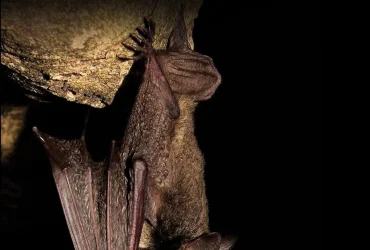 v6i1.123
v6i1.123ISSN: 1800-427X (print)
eISSN: 1800-427X (online)
DOI:10.47605/tapro.v6i1.123
Submitted date: 21 January 2014
Accepted date: 14 March 2014
Published date: 29 June 2014
Pp. 21–26, Pl. 8.
USE OF TEA PLANTATION BY WILD MAMMALS IN TAMIL NADU, INDIA
V. Gokula* & C. Thangatamil
*Corresponding author. E-mail: gokulae@yahoo.com
Abstract
Wild mammals that live in the fragmented primary forests in Western Ghats often leave the fragment due to resource shortages and use the nearby tea plantation either to forage or as a corridor to connect other fragments, during which time human-wildlife conflict is inevitable. Hence, understanding the need of wild mammals using the tea plantations is essential to minimize this conflict. We researched the use of tea plantations by wild mammals between October 2011 and January 2012 in Kolacamby, Nilgiris District, Tamil Nadu, India. Walks were made to determine the relative abundance of wild mammals inside the plantation. Scats of sloth bear (Melursus urisnus[i]), tiger ([i]Panthera tigiris), and leopard (Panthera pardus) found inside the plantation were analyzed to determine food habit. In addition, workers were informally interviewed about man-wildlife conflict. All major carnivores of the Western Ghats ecosystem were recorded in the area. Despite the richness of the fauna in the fragments, minimal human-wildlife conflict was reported.
Key words : habitat use, human-wildlife conflict, Kolacamby, mammals, tea plantation
Section Editor: Colin A. Chapman
eISSN: 1800-427X (online)
DOI:10.47605/tapro.v6i1.123
Submitted date: 21 January 2014
Accepted date: 14 March 2014
Published date: 29 June 2014
Pp. 21–26, Pl. 8.
USE OF TEA PLANTATION BY WILD MAMMALS IN TAMIL NADU, INDIA
V. Gokula* & C. Thangatamil
*Corresponding author. E-mail: gokulae@yahoo.com
Abstract
Wild mammals that live in the fragmented primary forests in Western Ghats often leave the fragment due to resource shortages and use the nearby tea plantation either to forage or as a corridor to connect other fragments, during which time human-wildlife conflict is inevitable. Hence, understanding the need of wild mammals using the tea plantations is essential to minimize this conflict. We researched the use of tea plantations by wild mammals between October 2011 and January 2012 in Kolacamby, Nilgiris District, Tamil Nadu, India. Walks were made to determine the relative abundance of wild mammals inside the plantation. Scats of sloth bear (Melursus urisnus[i]), tiger ([i]Panthera tigiris), and leopard (Panthera pardus) found inside the plantation were analyzed to determine food habit. In addition, workers were informally interviewed about man-wildlife conflict. All major carnivores of the Western Ghats ecosystem were recorded in the area. Despite the richness of the fauna in the fragments, minimal human-wildlife conflict was reported.
Key words : habitat use, human-wildlife conflict, Kolacamby, mammals, tea plantation
Section Editor: Colin A. Chapman
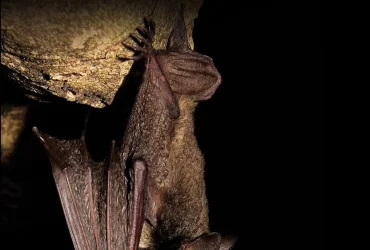 v6i1.122
v6i1.122ISSN: 1800-427X (print)
eISSN: 1800-427X (online)
DOI:10.47605/tapro.v6i1.122
Submitted date: 10 September 2013
Accepted date: 1 May 2014
Published date: 29 June 2014
Pp. 12–20, Pls. 3–7.
A NEW CRYPTIC SPECIES OF GECKO OF THE GENUS Hemidactylus Oken, 1817 (REPTILIA: GEKKONIDAE) FROM SOUTHERN INDIA
Zeeshan A. Mirza & Rajesh V. Sanap
*Corresponding author. E-mail: zeeshanm@ncbs.res.in
Abstract
A new species of gecko superficially resembling Hemidactylus maculatus is described from the southern Indian state of Tamil Nadu. Hemidactylus acanthopholis sp. nov. is a large sized Hemidactylus, SVL at least 91.7mm. Dorsal scalation on trunk granular, intermixed with enlarged, fairly regularly arranged longitudinal rows of 18–20 trihedral, moderately keeled, striated tubercles of equal size on dorso-lateral aspect, 2–3 rows of tubercles on mid-dorsal smaller in size, approximately two dorsal granular scales wide. Two large rounded and one small internasal between nasals. Two pairs of postmentals, anterior pair is twice as long and wide as the posterior pair. Scales on ventral trunk arranged in 35–40 rows. Lamellae divided, 9, 11, 10, 10, 10 on manus, and 10, 12, 12, 12, 12 on pes respectively on digits I–V. Caudal pholidosis on dorsal aspect, consist of small, striated scales intermixed with large rounded un-keeled tubercles, scales sub-equal throughout and a series of large eight enlarged, moderately keeled and weakly striated and flattened tubercles in a whorl on each caudal segment. Femoral pores, 19–21 on each side separated medially by 13–14 pore-less scales.
Key words : biogeography, Hemidactylus maculatus, species-complex, taxonomy, Western Ghats
Section Editor: Stephen Mahony
eISSN: 1800-427X (online)
DOI:10.47605/tapro.v6i1.122
Submitted date: 10 September 2013
Accepted date: 1 May 2014
Published date: 29 June 2014
Pp. 12–20, Pls. 3–7.
A NEW CRYPTIC SPECIES OF GECKO OF THE GENUS Hemidactylus Oken, 1817 (REPTILIA: GEKKONIDAE) FROM SOUTHERN INDIA
Zeeshan A. Mirza & Rajesh V. Sanap
*Corresponding author. E-mail: zeeshanm@ncbs.res.in
Abstract
A new species of gecko superficially resembling Hemidactylus maculatus is described from the southern Indian state of Tamil Nadu. Hemidactylus acanthopholis sp. nov. is a large sized Hemidactylus, SVL at least 91.7mm. Dorsal scalation on trunk granular, intermixed with enlarged, fairly regularly arranged longitudinal rows of 18–20 trihedral, moderately keeled, striated tubercles of equal size on dorso-lateral aspect, 2–3 rows of tubercles on mid-dorsal smaller in size, approximately two dorsal granular scales wide. Two large rounded and one small internasal between nasals. Two pairs of postmentals, anterior pair is twice as long and wide as the posterior pair. Scales on ventral trunk arranged in 35–40 rows. Lamellae divided, 9, 11, 10, 10, 10 on manus, and 10, 12, 12, 12, 12 on pes respectively on digits I–V. Caudal pholidosis on dorsal aspect, consist of small, striated scales intermixed with large rounded un-keeled tubercles, scales sub-equal throughout and a series of large eight enlarged, moderately keeled and weakly striated and flattened tubercles in a whorl on each caudal segment. Femoral pores, 19–21 on each side separated medially by 13–14 pore-less scales.
Key words : biogeography, Hemidactylus maculatus, species-complex, taxonomy, Western Ghats
Section Editor: Stephen Mahony
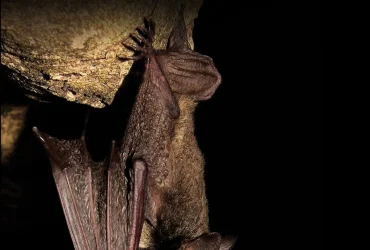 v6i1.121
v6i1.121ISSN: 1800-427X (print)
eISSN: 1800-427X (online)
DOI:10.47605/tapro.v6i1.121
Submitted date: 30 November 2013
Accepted date: 15 March 2014
Published date: 29 June 2014
Pp. 7–11, Pl. 2.
ACTIVITY BUDGET AND PERCH CHARACTERISTICS OF Pseudophilautus popularis (MANAMENDRA-ARACHCHI & PETHIYAGODA, 2005) (AMPHIBIA: RHACOPHORIDAE) DURING THE BREEDING SEASON
Salindra K. Dayananda* & Deepthi D. Wickramsinghe
*Corresponding author. E-mail: kasunkent@gmail.com
Abstract
This study reports activity budget and perch characteristics of the Sri Lankan endemic shrub frog Pseudophilautus popularis in a wetland-home garden setting in an urban area. Thirty-two frogs were studied from 18:30–06:00h and 45% of the time they were found to be stationary without any activity. The highest percentage of time was utilised for calling and courtship (52%). This study reveals that the frogs occupy different heights during their nightly activity period, starting from the ground level and gradually moving up among the vegetation. They were reported to reach the maximum heights around 23:00h, remaining there for nearly two hours and then retreating downwards towards the dawn. The results emphasize the importance of maintaining diversity of vegetation especially in terms of stratification in ensuring habitat quality to conserve this species.
Key words : behavior, endemic, home gardens, shrub frog, Sri Lanka, urban ecosytems
Section Editor: Enrique La Marca
eISSN: 1800-427X (online)
DOI:10.47605/tapro.v6i1.121
Submitted date: 30 November 2013
Accepted date: 15 March 2014
Published date: 29 June 2014
Pp. 7–11, Pl. 2.
ACTIVITY BUDGET AND PERCH CHARACTERISTICS OF Pseudophilautus popularis (MANAMENDRA-ARACHCHI & PETHIYAGODA, 2005) (AMPHIBIA: RHACOPHORIDAE) DURING THE BREEDING SEASON
Salindra K. Dayananda* & Deepthi D. Wickramsinghe
*Corresponding author. E-mail: kasunkent@gmail.com
Abstract
This study reports activity budget and perch characteristics of the Sri Lankan endemic shrub frog Pseudophilautus popularis in a wetland-home garden setting in an urban area. Thirty-two frogs were studied from 18:30–06:00h and 45% of the time they were found to be stationary without any activity. The highest percentage of time was utilised for calling and courtship (52%). This study reveals that the frogs occupy different heights during their nightly activity period, starting from the ground level and gradually moving up among the vegetation. They were reported to reach the maximum heights around 23:00h, remaining there for nearly two hours and then retreating downwards towards the dawn. The results emphasize the importance of maintaining diversity of vegetation especially in terms of stratification in ensuring habitat quality to conserve this species.
Key words : behavior, endemic, home gardens, shrub frog, Sri Lanka, urban ecosytems
Section Editor: Enrique La Marca
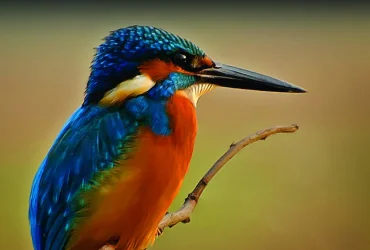 v7i4.208
v7i4.208ISSN: 1800-427X (print)
eISSN: 1800-427X (online)
DOI:10.47605/tapro.v7i4.208
Submitted date: 10 September 2014
Accepted date: 27 July 2015
Published date: 15 August 2015
Pp. 275–276.
THE MAN WHO LOVED ELEPHANTS AND STUDENTS: a tribute to Dr. Charles Santiapillai (1944–2014)
Sujan M. Henkanaththegedara & Upali S. Amarasinghe
*Corresponding author. E-mail:
He was a man who tirelessly worked to save elephants; He was a man who truly loved his profession, students and fellow colleagues; He was a man who has provided a great role model for budding scientists with continuous guidance and encouragement. More importantly, he was a kind and honest human being, who always tried to help and cheer fellow human beings. Dr. Charles Santiapillai, a world-renowned conservation biologist, passed away on the 29th October, 2014 peacefully amongst family at home in Kandy, Sri Lanka. He is a pioneering wildlife biologist who worked for the conservation of Asian elephants. His monumental work “The Asian Elephant: An Action Plan for its Conservation” captures his lifelong dedication for elephant conservation and sets the path not only for conservation of Asian elephants, but also for all large mammals in the brink of extinction.
eISSN: 1800-427X (online)
DOI:10.47605/tapro.v7i4.208
Submitted date: 10 September 2014
Accepted date: 27 July 2015
Published date: 15 August 2015
Pp. 275–276.
THE MAN WHO LOVED ELEPHANTS AND STUDENTS: a tribute to Dr. Charles Santiapillai (1944–2014)
Sujan M. Henkanaththegedara & Upali S. Amarasinghe
*Corresponding author. E-mail:
He was a man who tirelessly worked to save elephants; He was a man who truly loved his profession, students and fellow colleagues; He was a man who has provided a great role model for budding scientists with continuous guidance and encouragement. More importantly, he was a kind and honest human being, who always tried to help and cheer fellow human beings. Dr. Charles Santiapillai, a world-renowned conservation biologist, passed away on the 29th October, 2014 peacefully amongst family at home in Kandy, Sri Lanka. He is a pioneering wildlife biologist who worked for the conservation of Asian elephants. His monumental work “The Asian Elephant: An Action Plan for its Conservation” captures his lifelong dedication for elephant conservation and sets the path not only for conservation of Asian elephants, but also for all large mammals in the brink of extinction.
Hubungi Kami
The ultimate aim of the journal is to provide an effective medium for communication of the latest and best scientific information.
Copyright © 2020 Taprobanica. All Rights Reserved
Jasa Pembuatan Website by IKT




